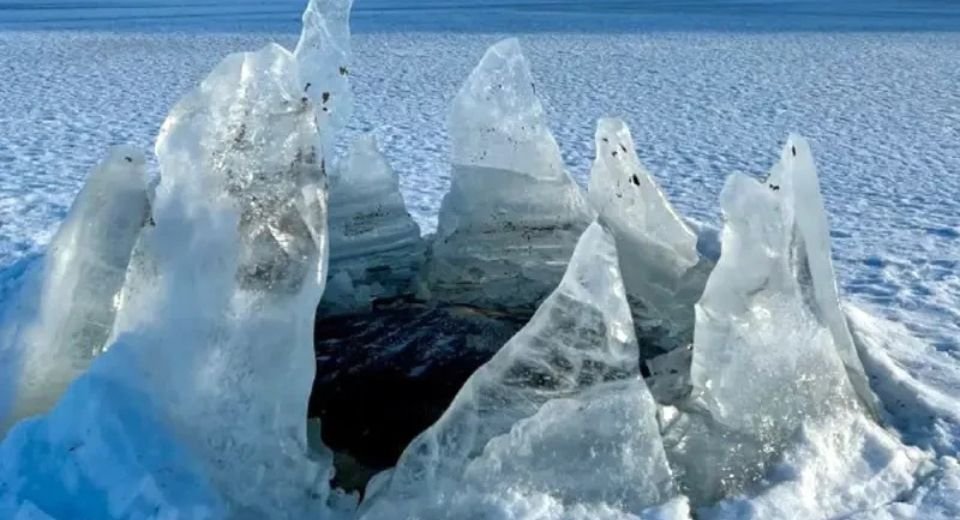HQ Team
April 10, 2025: Sweden’s researchers have recorded 300 times higher methane emissions in open patches of Siljan Ring lakes, the largest meteorite crater in Europe, raising climate concerns.
Lake Siljan is the largest of several lakes in the Siljan Ring area, a 370-million-year-old impact crater in central Sweden, formed by a meteorite strike.
Natural methane seepage from lakes in this region has long been known, and residents have reported persistent winter ice holes – “ice wakes” – reappearing in the same spots year after year.
Methane is a potent greenhouse gas with a global warming potential significantly higher than carbon dioxide.
Chalmers University of Technology researchers developed a novel measurement technique and found “persistent and concentrated methane leaks never before observed in a lake environment,” according to a statement.
Field campaigns
The research, led by Professors Johan Mellqvist and Vladimir Conde at Chalmers, measured methane emissions from lakes in the Siljan Ring during two field campaigns in 2023 and 2024.
The results surprised the scientists in several ways.
Researchers identified several “hotspots” – localised sites of intense methane leakage, forming visible gas plumes in the air.
When the researchers returned over six months later to repeat the measurements, the strong emissions remained, estimated at roughly “3.5 tons of methane per year, corresponding to 85 tons of CO₂-equivalents.”
CO₂-equivalents is a metric used to express emissions of greenhouse gases.
It reflects how much CO₂ would need to be emitted to have the same climate impact as a given amount of another greenhouse gas. One ton of methane corresponds to 28 tons of CO₂-equivalents.
‘Far more extensive’
“The natural methane emissions from the Siljan Ring lakes appear to be far more extensive than previously known,” said Johan Mellqvist, Professor of Optical Remote Sensing at Chalmers.
“At certain sites, we recorded emission rates up to 300 times higher than what is typically seen in lakes.”
Scientists will now investigate whether these emissions are unique to Siljan – or part of a broader phenomenon that could occur in lakes worldwide.
“That the methane emissions at Siljan are so substantial provides important insights into Sweden’s natural greenhouse gas budget and emission sources,” Johan said.
‘Bubble emissions’
“While the individual sources we identified may be minor in the national context, we don’t yet know how many more exist or how they fluctuate over time. If future studies reveal even larger-scale emissions, it could justify efforts to reduce them.”
Methane emissions from lakes usually occur as “bubble emissions,” sporadic, scattered leaks that pop up here and there on the water’s surface.
These result from organic matter decaying in the lakebed, forming methane that bubbles up. The researchers were surprised to find the emissions in Siljan were far more concentrated than typical bubble emissions.
“It’s unusual – and quite strange – that the emissions were so extremely localised. To our knowledge, this kind of tightly concentrated methane leak has never been measured in a lake before,” said Mellqvist.
“And we’ve only examined a small part of the Siljan Ring lakes so far. We may have only seen the tip of the iceberg.”
Crucial question
A crucial question is the origin of the methane. One possibility is that it’s so-called “deep gas” from underground – caused by the meteorite impact at Siljan, which may have carried organic material deep into the Earth where it continues to generate leaking methane.
Another possibility is that the emissions come from methane pockets – trapped gas in sediments below the lakebed that gradually leaks out.
“If it turns out to be deep gas, then this may be unique to the Siljan Ring and the impact crater. But if it comes from more shallow sediment pockets, then this type of emission might be present in many more places,” Mellqvist said.
